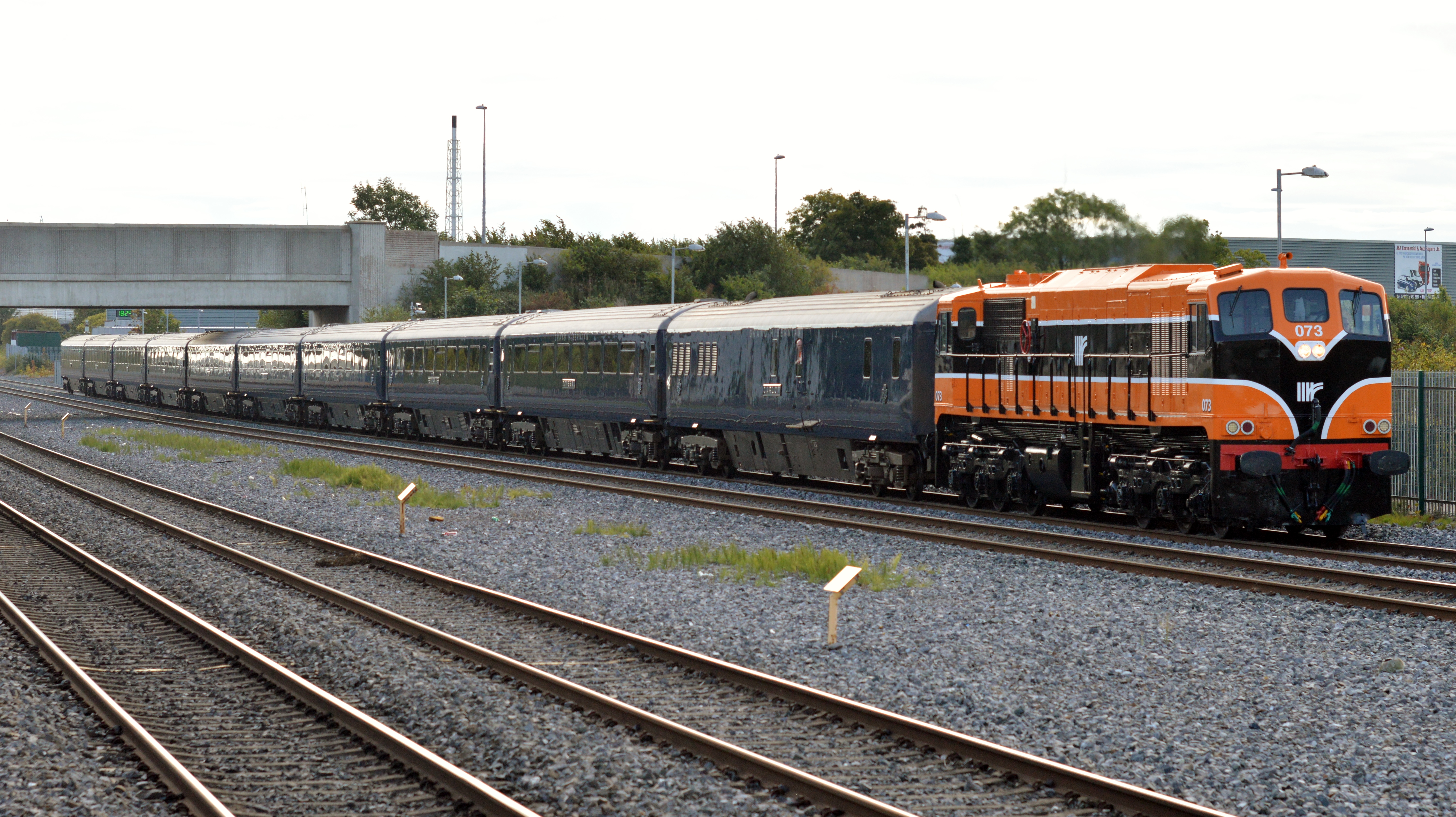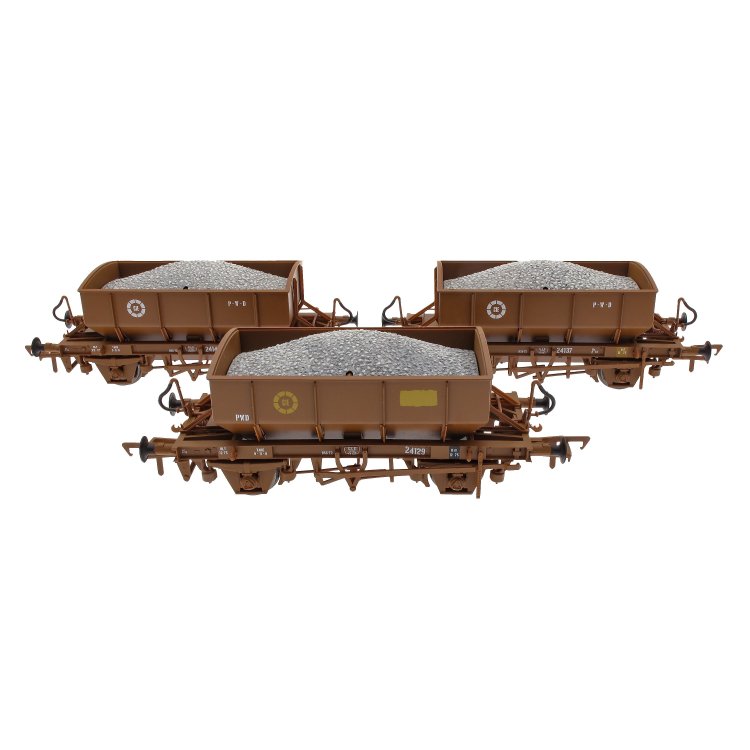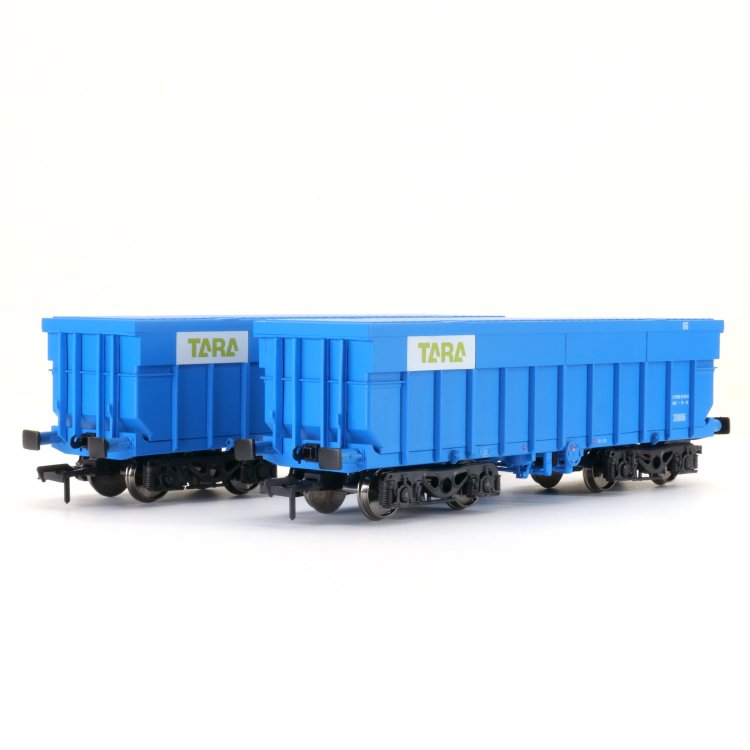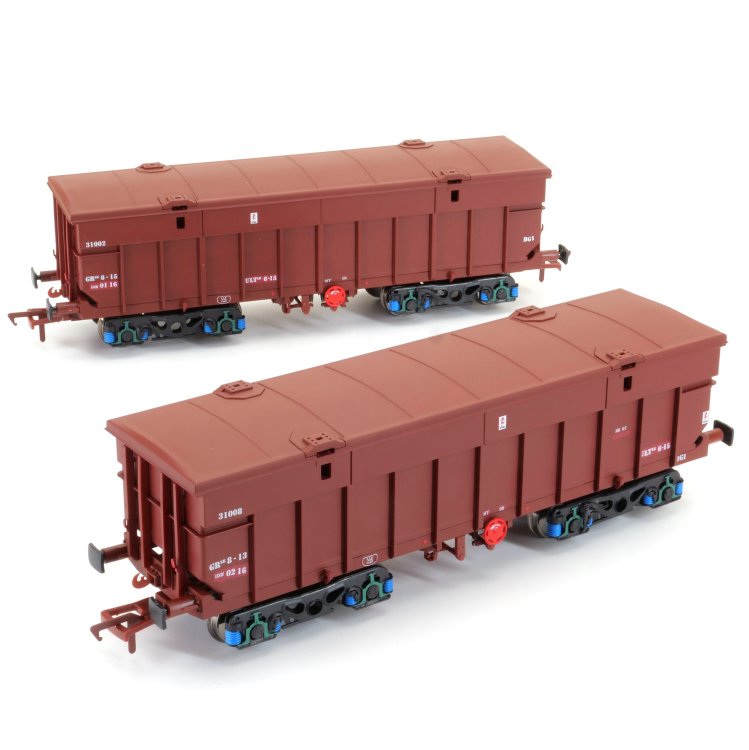-
Posts
7,083 -
Joined
-
Last visited
-
Days Won
250
Content Type
Profiles
Forums
Resource Library
Events
Gallery
Blogs
Store
Community Map
Everything posted by Warbonnet
-
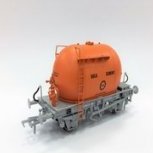
Ernies Massive Irish 1930's to 2005 Photo Archive
Warbonnet replied to Glenderg's topic in Photos & Videos of the Prototype
Thanks for the update, @Brack. Please pass on the best wishes from all of us at IRM/Accurascale and we all hope he gets well very soon! -
Our humble HUO hopper wagon is coming back! Due to popular demand, we are delighted to announce new packs of the first Accurascale model, the 24.5 ton BR coal hopper wagon. These are an essential part of our "Powering Britain" series of coal wagons through the ages of the railway, providing essential service to the power stations across the country from the 1950s to the 1980s. Available in both pre-TOPS and TOPS guises, four new three packs are now available to pre-order. Delivery is slated for Q2 2022, with pre-production decorated samples due soon. As ever, we love to give you the very best value, with three highly detailed wagons for an excellent price of just £69.95 per pack and a further 10% off when you buy two packs or more. Pre-order yours by clicking here! View the full article
-
- 3
-

-
Our humble HUO hopper wagon is coming back! Due to popular demand, we are delighted to announce new packs of the first Accurascale model, the 24.5 ton BR coal hopper wagon. These are an essential part of our "Powering Britain" series of coal wagons through the ages of the railway, providing essential service to the power stations across the country from the 1950s to the 1980s. Available in both pre-TOPS and TOPS guises, four new three packs are now available to pre-order. Delivery is slated for Q2 2022, with pre-production decorated samples due soon. As ever, we love to give you the very best value, with three highly detailed wagons for an excellent price of just £69.95 per pack and a further 10% off when you buy two packs or more. Pre-order yours by clicking here! View the full article
-
45 mins to go....
-
Hi everyone, Just a reminder, sale ends 6pm! Lot's sold out, with some more not far behind. Don't miss the biggest Irish model rail sale ever! https://irishrailwaymodels.com/collections/blackfriday Cheers, Fran
-
Hi everyone, Thanks for the feedback! it seems that our Black Friday sale has gone down very well indeed, with many of you bagging bargains! Thank you to everyone who has shopped with us so far. Several product lines have now sold out, but there are still plenty of tasty bargains to be had, with 30% off RRP on remaining ballast, gypsum and spoil wagon packs, or an incredible 40% off when you buy two packs or more! There is an incredible 52% off RRP of our remaining stock of local link buses from Britbus too. Sale ends 6pm on Monday, so don't miss out. Order now: https://irishrailwaymodels.com/collections/blackfriday Cheers! Fran
-
The CIE ballast hoppers becoming a most endangered species. Don' miss out on your last chance to grab them for a bargain price!
-
Several items now sold out, with a few more not far behind already. Wow! Thanks for all the orders so far everyone! Cheers! Fran
-
It's time for our famous Black Friday sale! Unlike piecemeal token sales items with other retailers, we offer you serious savings on in-stock items, and 2021 is our biggest sale yet. How about this for a deal? Save 30% on any ballast, gypsum or spoil wagon pack, and a whopping 40% if you buy two packs or more! We also have 30% off our remaining stocks of Murphy Models 121 Class locomotives! Our sale runs from 9am Friday November 26th until Monday, 29th at 6pm, or until stock runs out. Don't miss out, get these unbeatable bargains while you can! Check out all the deals right here: https://irishrailwaymodels.com/blackfriday
-
Hi @Barl, All packs should be in the box, we just had a bit of a glitch with one of the barcodes on a small group of orders, hence why they took a few days to ship out. If anything is up with the order let us know via email. All orders should now be on their way after today. Cheers! Fran
-
Hi everyone, As is our tradition now, we will have a Black Friday sale this year, beginning 9am on Friday, November 26th and closing on Monday, November 29th, or on sell out, whichever happens first. We wont reveal what is in the sale until Friday, but can confirm it is our biggest sale ever, and there are savings up to 40% off RRP to be had! This will be no piecemeal small percentage off kinda sale, but a true Black Friday bonanza, just as it should be! So, prepare your wallets and make some serous savings this weekend, and check back here on Friday for further details and links! Cheers! Fran
-
- 9
-

-

-
We will of course have a Black Friday sale, and a very good one it will be too. Look out for details from 9am this Friday! Cheers! Fran
-
Hi Everyone, Great News! Our Tara Mines wagons have landed in stock, bang on schedule! We announced our latest run of Tara Mines wagons back in June, featuring a new run of red oxide wagons and, for the first time, the iconic original blue with Tara branding and original style hoods. Pre-orders are currently being sent out and will be complete by Tuesday, November 23rd. All new orders will be dispatched after that date. With over 50% of this limited run already sold out, these beauties will not hang around. Perfect companions for your IRM A Class as well as your 071 locomotives, our highly detailed Tara Mines wagons are a must for the Irish modeller. Each twin pack of wagons is available for just €79.95 each and there is 10% off when you order two packs or more, making them the bargain of the Irish model railway scene. Order yours now: https://irishrailwaymodels.com/collections/tara-mines Cheers! Fran
-
Our Mark 2B coaches have caused quite the stir since we announced them in late August of this year, with a comprehensive list of of BR liveries offered on this missing link of Ready-to-Run coaching stock in 00/4mm. "But, what about us current day modellers?" Well, you have asked, so we have listened, We are now adding two new running numbers to our Mark 2B release programme, with two TSOs in West Coast Railways maroon livery! Following the mass withdrawal of the Mark 2Bs following the sprinterisation during the 1990s many of these attractive coaches found themselves out of work. There was a slight reprieve just a few years later for a small batch of coaches, as the shadow South Wales & West franchise hired some Mark 2Bs for various diagrams between Birmingham/Manchester, Cardiff/Bristol and Westbury/Weymouth. These services ran from 1996 to 1999, with the coaches later being picked up again by Wales & Borders for Rhymney-Cardiff-Fishguard services from 2001-2004. Several of these were then transferred to the West Coast Railways railtour fleet and remain main line registered. Rail tours have become big business on the privitised railway scene, with companies like West Coast Railways operating a series of steam, diesel and electric hauled trains every year across the country with their mixed rakes of Mark 1 and Mark 2 vehicles. To replicate these interesting trains on the network, and to give current scene modellers an excuse to run heritage diesel, electric and steam traction, we are offering two Mark 2B TSOs in West Coast Railways livery to feature in your rail tour fleet. Both coaches are perfect excuses to run heritage diesels such as Class 33, 37 and 47s, as well as 57s in West Coast livery, as well as classics such as BR green and BR blue Then there are electrics like 86259 in classic 1960s blue, or indeed a plethora of mainline registered steam locomotives, from Black 5s, Jubilees, Britannias and more from the golden age of steam! Each Mark 2B coach will be sold separately at a price of £59.95 each and are available to order direct via Accurascale or via your local stockist. A 10% discount is available should you order two or more coaches together direct from Accurascale. Our high specification will once again be apparent throughout this model, including full interior lighting with stay alive function, a wealth of separately applied prototypical details, including etch metal parts, prism free glazing and more. As you can see with the sample above, tooling is complete, the first pre-production samples have been delivered and the project is well advanced. However, there are corrections being made based on the samples which are now being undertaken by the factory. Overall there is a wealth of detail, crispness and they capture the essence of the Mark 2b very well indeed. Delivery is slated for Q3 2022. However, with the current global difficulties in production and shipping following the COVID19 pandemic and Suez issues (shipping companies estimating FOUR YEARS until sea traffic returns to normal!) this may extend to Q4 2022. Browse the range and place your pre-orders direct by clicking here. Specification Highly-detailed OO Gauge / 1:76.2 Scale Models on 16.5mm track Extremely fine exterior rivet detail on roof and coach ends Separately-applied etched metal and high-fidelity plastic parts, including handrails, brake/steam heat pipes, ETH cabling and sockets, footsteps, dummy drophead knuckle coupler, and roof vents Prism Free Glazing Pre-painted/printed Western Region destination boards and holders plus water filler covers provided for customer to install Fully-detailed underframe with numerous separate parts, pipe runs and accurate differences between versions The most accurate B4 and B5 bogies ever produced, with provision for re-gauging to EM or P4 (British 18.83mm) gauges Blackened RP25.110 profile wheel-sets with 14.4mm back-to-back measurements, and 26mm over pinpoints Different buffers for retracted and non-retracted positions Accurate interiors with characteristic 'winged' headrests, separate metal interior handrails on the brake and corridor vehicles and fully-detailed guard's compartment Full lighting package, including magnet 'wand' controlled interior lighting with 'Stay-Alive' capacitor in all coaches and directional lighting with DC or DCC control (Driving Trailer only) Minimum Radius 438mm (2nd Radius Set-track) Correct height NEM standard coupling sockets with mini tension lock couplers and kinematic close-coupling View the full article
-
Our Mark 2B coaches have caused quite the stir since we announced them in late August of this year, with a comprehensive list of of BR liveries offered on this missing link of Ready-to-Run coaching stock in 00/4mm. "But, what about us current day modellers?" Well, you have asked, so we have listened, We are now adding two new running numbers to our Mark 2B release programme, with two TSOs in West Coast Railways maroon livery! Following the mass withdrawal of the Mark 2Bs following the sprinterisation during the 1990s many of these attractive coaches found themselves out of work. There was a slight reprieve just a few years later for a small batch of coaches, as the shadow South Wales & West franchise hired some Mark 2Bs for various diagrams between Birmingham/Manchester, Cardiff/Bristol and Westbury/Weymouth. These services ran from 1996 to 1999, with the coaches later being picked up again by Wales & Borders for Rhymney-Cardiff-Fishguard services from 2001-2004. Several of these were then transferred to the West Coast Railways railtour fleet and remain main line registered. Rail tours have become big business on the privitised railway scene, with companies like West Coast Railways operating a series of steam, diesel and electric hauled trains every year across the country with their mixed rakes of Mark 1 and Mark 2 vehicles. To replicate these interesting trains on the network, and to give current scene modellers an excuse to run heritage diesel, electric and steam traction, we are offering two Mark 2B TSOs in West Coast Railways livery to feature in your rail tour fleet. Both coaches are perfect excuses to run heritage diesels such as Class 33, 37 and 47s, as well as 57s in West Coast livery, as well as classics such as BR green and BR blue Then there are electrics like 86259 in classic 1960s blue, or indeed a plethora of mainline registered steam locomotives, from Black 5s, Jubilees, Britannias and more from the golden age of steam! Each Mark 2B coach will be sold separately at a price of £59.95 each and are available to order direct via Accurascale or via your local stockist. A 10% discount is available should you order two or more coaches together direct from Accurascale. Our high specification will once again be apparent throughout this model, including full interior lighting with stay alive function, a wealth of separately applied prototypical details, including etch metal parts, prism free glazing and more. As you can see with the sample above, tooling is complete, the first pre-production samples have been delivered and the project is well advanced. However, there are corrections being made based on the samples which are now being undertaken by the factory. Overall there is a wealth of detail, crispness and they capture the essence of the Mark 2b very well indeed. Delivery is slated for Q3 2022. However, with the current global difficulties in production and shipping following the COVID19 pandemic and Suez issues (shipping companies estimating FOUR YEARS until sea traffic returns to normal!) this may extend to Q4 2022. Browse the range and place your pre-orders direct by clicking here. Specification Highly-detailed OO Gauge / 1:76.2 Scale Models on 16.5mm track Extremely fine exterior rivet detail on roof and coach ends Separately-applied etched metal and high-fidelity plastic parts, including handrails, brake/steam heat pipes, ETH cabling and sockets, footsteps, dummy drophead knuckle coupler, and roof vents Prism Free Glazing Pre-painted/printed Western Region destination boards and holders plus water filler covers provided for customer to install Fully-detailed underframe with numerous separate parts, pipe runs and accurate differences between versions The most accurate B4 and B5 bogies ever produced, with provision for re-gauging to EM or P4 (British 18.83mm) gauges Blackened RP25.110 profile wheel-sets with 14.4mm back-to-back measurements, and 26mm over pinpoints Different buffers for retracted and non-retracted positions Accurate interiors with characteristic 'winged' headrests, separate metal interior handrails on the brake and corridor vehicles and fully-detailed guard's compartment Full lighting package, including magnet 'wand' controlled interior lighting with 'Stay-Alive' capacitor in all coaches and directional lighting with DC or DCC control (Driving Trailer only) Minimum Radius 438mm (2nd Radius Set-track) Correct height NEM standard coupling sockets with mini tension lock couplers and kinematic close-coupling View the full article
-
- 1
-

-
If anyone is looking for a respray donor we still have a few left in stock https://irishrailwaymodels.com/collections/murphy-models-class-121-locomotive/availability_in-stock? Have to say I prefer this to the original 1961 grey and yellow, but maybe when 134 is finished in that livery it will change my mind. Cheers! Fran
-
Hi everyone, We're also finished our audits of cancelled orders and have also freed up some of the stock we kept behind for warranty repairs. All numbers apart from A3r are now back on sale in extremely limited quantities. So, if you had previously missed out on a running number... Bag yours here: https://irishrailwaymodels.com/collections/a-class-locomotive Cheers! Fran
-
Hi everyone, After much begging, moaning, pleading and badgering, we managed to secure a small quantity of A Class standard decoders from ESU. These are the only new batch of ESU Lokpilots available anywhere, and we're so grateful to ESU for prioritising us with these. They have now arrived in stock and any pre-orders for these will be sent out from today. Thank you to everyone for your patience. We thought we'd have to wait 12 months for these as per the global semi conductor shortage! We have a relatively small surplus that you can order now here: https://irishrailwaymodels.com/collections/a-class-locomotive/products/a-class-dcc-standard-chip Cheers! Fran
-
err... www.irishrailwaymodels.com Most clubs also run models and layouts covering diverse interests. MRSI for instance as O gauge, American HO, British OO and Continental HO and N as far as I know.
-
When we did the sound for the As we recorded A39r, so the sound is from a genuine A. No mixing or tricks there from other EMD locos. End of the day, our sound chip is the real deal and the As sound different to other EMD locos due to their unique silencer set up. Just need Australia to relax quarantine rules now and we'll get the Crossley one done!
.png.c363cdf5c3fb7955cd92a55eb6dbbae0.png)
